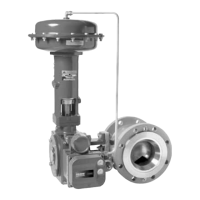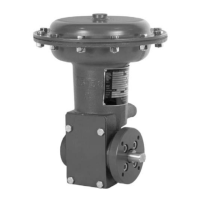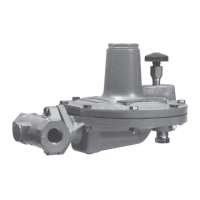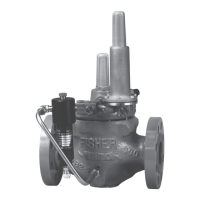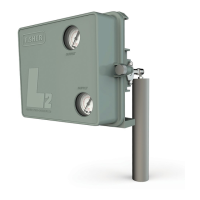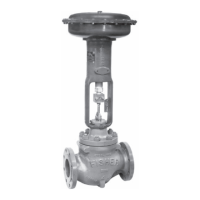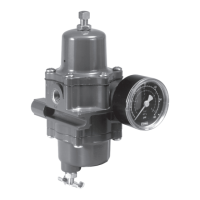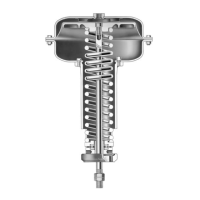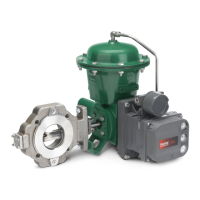Instruction Manual
D100331X012
1066 and 1066SR F & G Actuators
October 2012
8
If rotation of either set s crew seems difficult, apply lithium grease lubricant (key 35) to the threads of each set screw as
shown in figures 5 and 6.
Figure 3. Mo unting Yoke Detail
TRAVEL
INDICATOR
SCALE (KEY 21)
48A4468-C
TRAVEL
INDICATOR
SCALE (KEY 21)
MOUNTING
YOKE (KEY 25)
BEARING
(KEY 4)
BEARING (KEY 4)
STYLES A AND D
(STANDARD CONSTRUCTION)
STYLES B AND C
(REVERSE CONSTRUCTION)
Principle of Operation
1066 Actuators: Piston movement is accomplished by loading air pressure on one side of the piston (key 3, figure 4),
while unloading air pressure from the other side. The piston moves a lever (key 10) to open or close the valve. Use
either a positioner, a loading solenoid, a four-way switching valve, or two three-way valves to operate the actuator.
Actuators equipped with either the wrench override option or with a 1078 handwheel can manually position a control
valve without using supply or instrument air pressure. Be sure to open the cylinder bypass valve to equalize pressure
before manually operating the valve/actuator assembly.
1066SR Actuators: Piston movement is accomplished by loading air pressure on top of the piston (key 3, figure 5) to
move the piston down. T his action compresses the spring . If loading pressure is decreased or removed, spring
compression moves the piston to the top of the cylinder. The piston moves a lever (key 10) to open or close the valve.
Use either a positioner, a loading solenoid, or a switching valve to operate the actuator.
Maintenance
Instructions are given in this section for replacing the cylinder O-ring, the cylinder gasket, the lever/bearing assembly,
and other parts. Key numbers are shown in figures 6 and 7 unless otherwise noted.
WARNING
Avoid personal injury from sudden release of process pressure or uncontrolled movements of parts. Before performing any
maintenance operations:
D Do not remove the actuator from the valve while the valve is still pressurized.

